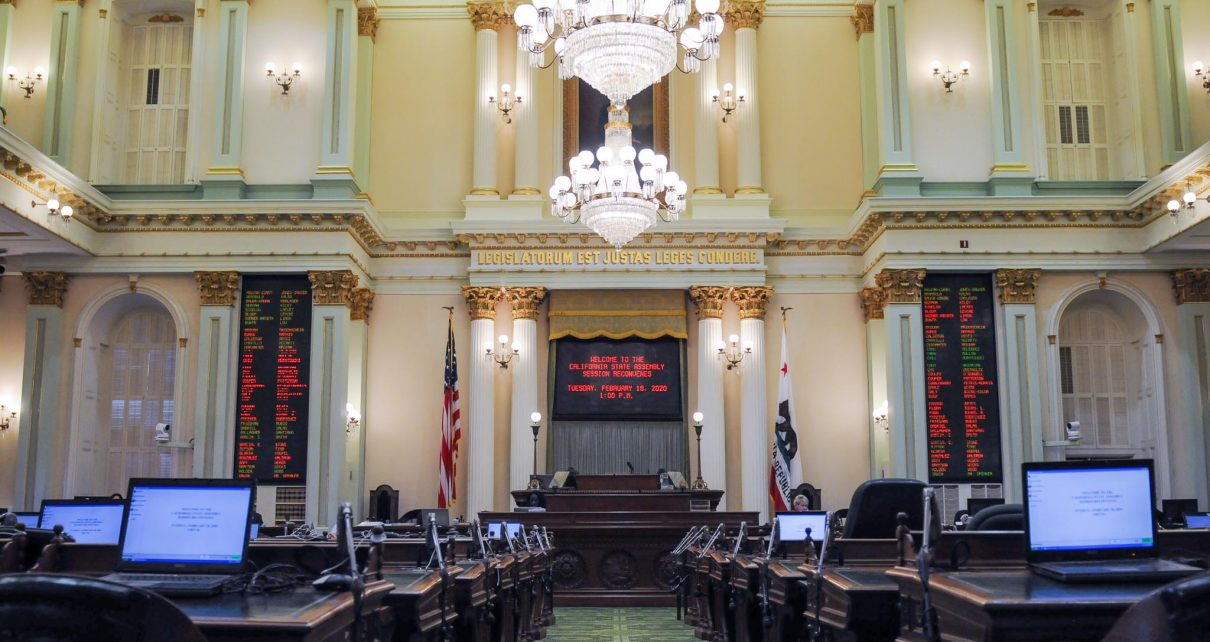
California State Assembly. (Photo: Kevin Sanders for California Globe)
What Bill Drafting Guidance Do We Have from the California Government Code?
There are several sources of guidance in drafting bills
By Chris Micheli, September 25, 2022 2:49 pm
When drafting legislation in California, there are several sources of guidance in drafting bills and other forms of legislation (resolutions and constitutional amendments). The second source is the California Government Code. What legislation drafting guidance is contained in the state Government Code?
Enacting Clause
Government Code Section 9501.5 provides the following: “The enacting clause of every law shall be ‘The people of the State of California do enact as follows:’.”
This statutory provision instructs the bill drafter to include an enacting clause in every bill. A bill cannot be enacted without this clause as specified.
Bills Taking Immediate Effect
Government Code Section 9600 provides, in part, the following: “(b) Statutes calling elections, statutes providing for tax levies or appropriations for the usual current expenses of the state, and urgency statutes shall go into effect immediately upon their enactment.”
This statutory provision instructs the bill drafter to include language in the Legislative Counsel’s Digest, as well as in a “plus section” at the end of the bill, that provides an explanation that these four types of bills take effect immediately upon the Governor’s signature. This statement is provided to educate readers and decision-makers about one of these unique provisions.
General Construction Rules
Government Code Section 9603 provides: “The general rules for the construction of statutes are contained in the preliminary provisions of the different codes.”
This statutory provision instructs the bill drafter to review the general or preliminary provisions of one of California’s 29 Codes before the bill drafter begins their work on a bill to ensure that those statutory construction rules are taken into account when drafting the bill.
References
Government Code Section 9604 provides: “When the provisions of one statute are carried into another statute under circumstances in which they are required to be construed as restatements and continuations and not as new enactments, any reference made by any statute, charter or ordinance to such provisions shall, unless a contrary intent appears, be deemed a reference to the restatements and continuations.”
This statutory provision instructs the bill drafter to note these rules when drafting any restatements of existing law.
Amended Sections
Government Code Section 9605 provides: “(a) If a section or part of a statute is amended, it is not to be considered as having been repealed and reenacted in the amended form. The portions that are not altered are to be considered as having been the law from the time when those provisions were enacted; the new provisions are to be considered as having been enacted at the time of the amendment; and the omitted portions are to be considered as having been repealed at the time of the amendment. When the same section or part of a statute is amended by two or more acts enacted at the same session, any portion of an earlier one of those successive acts that is omitted from a subsequent act shall be deemed to have been omitted deliberately and any portion of a statute omitted by an earlier act that is restored in a subsequent act shall be deemed to have been restored deliberately.
(b) In the absence of any express provision to the contrary in the statute that is enacted last, it shall be conclusively presumed that the statute which is enacted last is intended to prevail over statutes that are enacted earlier at the same session and, in the absence of any express provision to the contrary in the statute that has a higher chapter number, it shall be presumed that a statute that has a higher chapter number was intended by the Legislature to prevail over a statute that is enacted at the same session but has a lower chapter number.”
This statutory provision instructs the bill drafter to keep in mind these rules of statutory interpretation when drafting amendments to existing code sections, especially when two or more bills amend the same code section. This is one of the reasons that conflicting bills are usually amended to contain double-jointing language to protect again “chaptering out” problems. This provision also provides guidance to a bill drafter to instruct the chief executive with the proper order of chaptering bills that have one or more conflicting code sections.
Repealed Statutes – Part I
Government Code Section 9606 provides: “Any statute may be repealed at any time, except when vested rights would be impaired. Persons acting under any statute act in contemplation of this power of repeal.”
This statutory provision instructs the bill drafter to take into account whether the proposed bill affected any vested rights. If a vested right would be impacted, then the bill drafter has to determine whether that vested right would be impaired by the bill, if it were enacted. Otherwise, any statute can be repealed.
Revival of Statutes
Government Code Section 9607 provides: “(a) Except as provided in subdivision (b), no statute or part of a statute, repealed by another statute, is revived by the repeal of the repealing statute without express words reviving such repealed statute or part of a statute. (b) If a later enacted statute that deletes or extends the date of termination or repeal of a previously enacted law is chaptered before such date of termination or repeal, the terminated or repealed law is revived when the later enacted statute becomes operative.”
This statutory provision instructs the bill drafter to take these rules into consideration when repealing a statute or dealing with a sunset date clause in a bill (i.e., repeal date).
Criminal Offenses
Government Code Section 9608 provides: “The termination or suspension (by whatsoever means effected) of any law creating a criminal offense does not constitute a bar to the indictment or information and punishment of an act already committed in violation of the law so terminated or suspended, unless the intention to bar such indictment or information and punishment is expressly declared by an applicable provision of law.”
This statutory provision instructs the bill drafter to provide an express statement in a bill if there is a proposal to terminate or suspend a criminal offense statute to deal with the issue of impacting an indictment or information for an existing criminal offense.
Repealed Statutes – Part II
Government Code Section 9609 provides: “A statute amending a section of a repealed statute is void.”
This statutory provision instructs the bill drafter to not amend a section of a repealed statute because this type of bill would not be able to make the desired change because the statute it proposes to amend does not actually exist, and therefore cannot be amended.
Salaries of State Workers
Government Code Section 9610 provides: “The fixing or authorizing the fixing of the salary of a State officer or employee by statute is not intended to and does not constitute an appropriation of money for the payment of the salary. The salary shall be paid only in the event that moneys are made available therefor by another provision of law.”
This statutory provision instructs the bill drafter to note that setting a salary for state officials or employees does not actually appropriate money for that purpose. Instead, the appropriation would have to be made in a budget bill or a budget trailer bill for the higher salary to actually be paid.
Temporary Suspensions
Government Code Section 9611 provides: “Notwithstanding any other provision of this chapter, whenever a provision of law is temporarily suspended, or is expressly or impliedly modified or repealed by a provision which is declared to be effective for only a limited period, the original provisions are not to be deemed repealed, but upon the expiration of the time of the temporary suspension or the effectiveness of the inconsistent provision, the original provision shall have the same force and effect as if the temporary provision had not been enacted.”
This statutory provision instructs the bill drafter to take this rule into account when a bill temporarily suspends or modifies an existing statute, when that bill is in effect for a specified amount of time. The original statute is not repealed by this other bill.
- Why Would the Legislature Request? - December 13, 2024
- A Different Type of Legislative Statement? - December 12, 2024
- Service of Summons in California Civil Actions - December 11, 2024





3 thoughts on “What Bill Drafting Guidance Do We Have from the California Government Code?”